The Making of Thai Silk
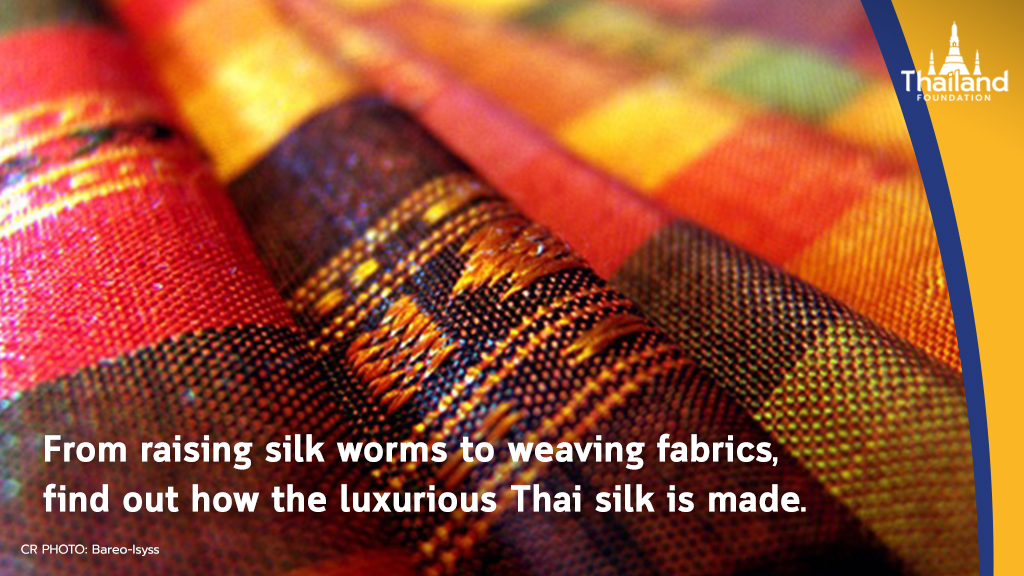
Thai silk is a world-renowned product whose name is synonymous with luxury and beauty. Other than its commercial worth, Thai silk also holds significant cultural values.
Sericulture and weaving, which have helped to sustain the people of Thailand for ages, are all special processes that require great time and care. These knowledges are preserved in the delicate fingers of the weavers who pass down their skills from generation to generation.
The Sericulture Process
Sericulture, the cultivation of silkworms, is a traditional knowledge that reflects the deep connection Thai people have with nature. Known for their voracious appetite, silkworms feed only on mulberry leaves. To ensure a steady supply of fresh leaves, farmers grow their mulberry bushes nearby. The mulberry growing season begins in spring. When the trees are ready, the silk cultivation process begins.
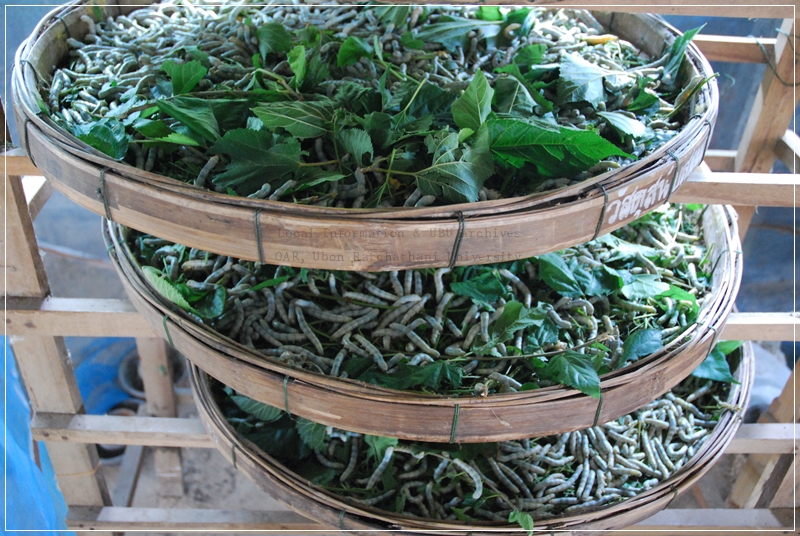 Raising silkworms [cr. esanpedia]
Raising silkworms [cr. esanpedia]
The sericulture cycle may be broken down into four phrases, incluing:
Phase 1: Silk moth eggs hatch into caterpillars called silkworms.
Phase 2: When the silkworms are about nine days old the feeding schedule increases to three times a day. Around Day 18, the larger silkworms are moved to other baskets to give them sufficient room to keep growing.
Phase 3: After about 36 days the silkworms reach full growth and turn yellow.
Phase 4: The silkworms are now moved onto special round, flat bamboo trays (chor) to spin their cocoon, a process that takes five to eight days. The chor is fitted with a spiral strip of bamboo, resembling a coiled snake, that helps hold the cocoons in place. Most of the completed cocoons are harvested quickly to ensure that the pupa inside does not hatch, which would spoil the silk. Some, however, are permitted to hatch to provide eggs for the next cycle.
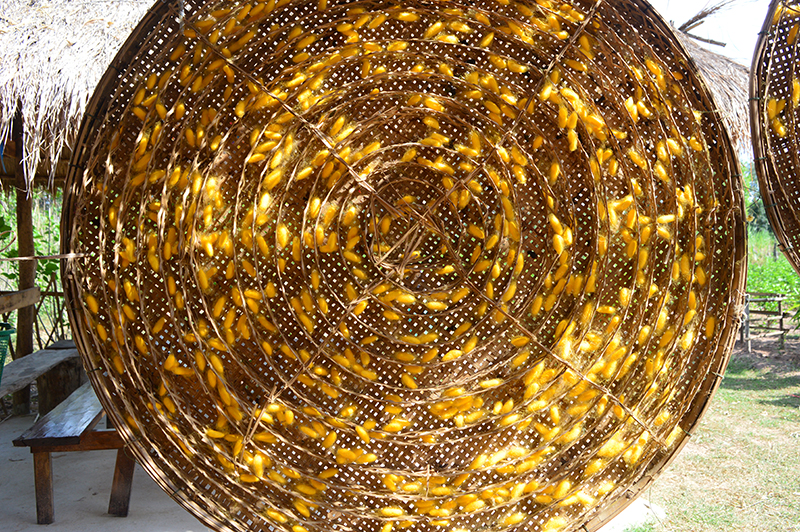 Cocoons in chor [cr.Nairobroo]
Cocoons in chor [cr.Nairobroo]
Cleanliness is crucial in sericulture. While the silkworms are growing, and especially while they are spinning their cocoons, they must be protected from smoke and insects such as flies, mosquitoes, and ants. A thin sheet of fabric is often used to cover the chor.
Preparing the Silk
Once the cocoons are harvested, they are processed through specific steps in order to prepare them for weaving. The steps consist mainly of reeling, dyeing, and preparing the loom.
Reeling
- The cocoons are boiled to release the filaments of silk.
- Filaments from 10 to 20 cocoons are twisted together to form a single thread.
- The thread is hand-reeled into skeins.

Silk reeling [cr. isangate]
Dyeing the Silk and Preparing the Loom
- The thread, naturally a golden yellow color, is bleached white in boiling alkaline water made from plant charcoal derived from local sources, such as banana leaves, cotton pods, and coconut husks.
- The bleached thread us then dyed with any of a variety of dyestuffs. Both natural and dyes are currently in use in different parts of Thailand.
- The dyed silk intended for warp (vertical elements) is measured, threaded onto the loom, and placed under tension.
- The weft threads (horizontal elements) are wound onto small bobbins.
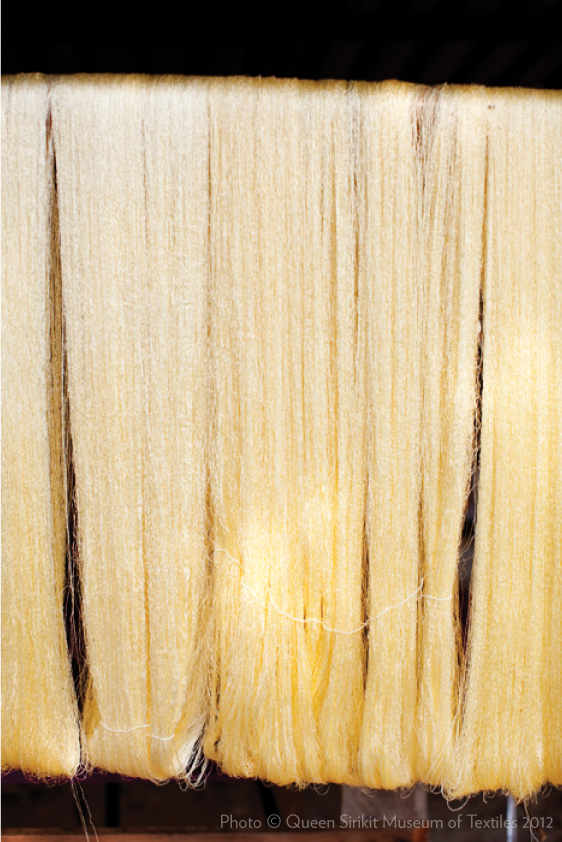
Natural silk threads [cr. Queen Sirikit Museum of Textiles]
Weaving
There are two major techniques of silk weaving in Thailand: ikat and brocade.
Ikat, called mat mii (มัดหมี่) in Thai, is a textile technique whereby patterns are dyed onto weft threads before the fabric is woven. The dyeing process involves binding bundles of threads with strips of water-resistant materials, such as banana ropes or plastic, in a predetermined pattern. The binding “resists” the dye and thus control the coloring of the yarn. This technique is characteristic of Northeastern Thailand.
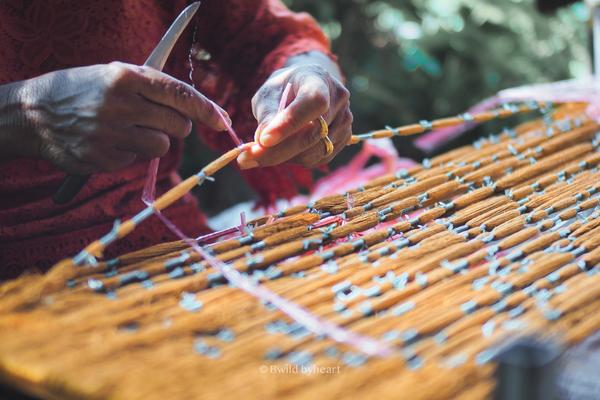
Mat mii [cr.BWILD By Heart]
Brocading, another technique, consists of patterned textiles with one set of warps and one set of wefts composing the ground fabric. An extra set of wefts, often of a different color and texture, is required to create the pattern. Examples of textiles produced through this manner include chok (จก) from the Central Region, pha yok (ผ้ายก) from the Southern Region, and khit (ขิด) and phrae wa (แพรวา) from the Northeastern Region. Chok and pha yok are further characterized by supplementary threads that remain only in the patterned area. Pha yok, in particular, uses metallic supplementary weft threads to create a glimmering effect on the finished cloth. By contrast, with khit and phrae wa, the supplementary patterning threads run across the entire cloth from side to side.
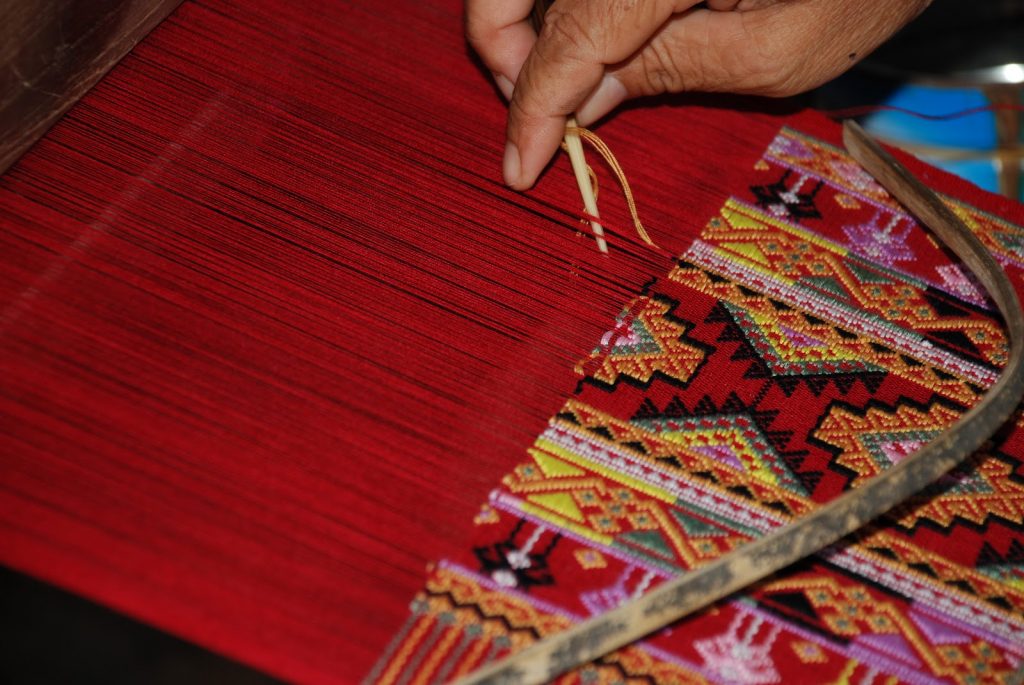
Chok brocade [cr.krubomjung.blogspot.com]
Other than ikat and brocading, silk can also be employed in other textile techniques, such as embroidery and fabric painting.
Today, the process of hand weaving has evolved significantly due to improvements in sericulture and a greater diversity in the types of fabric being woven. Sericulture and silk weaving continue to support the livelihoods of many communities across Thailand, especially in the Northeastern Region. Organizations such as the SUPPORT Foundation, which was founded by Her Majesty Queen Sirkit, the Queen Mother, has continued to preserve Thai textiles, and at the same time, injecting new life into Thailand’s weaving tradition.
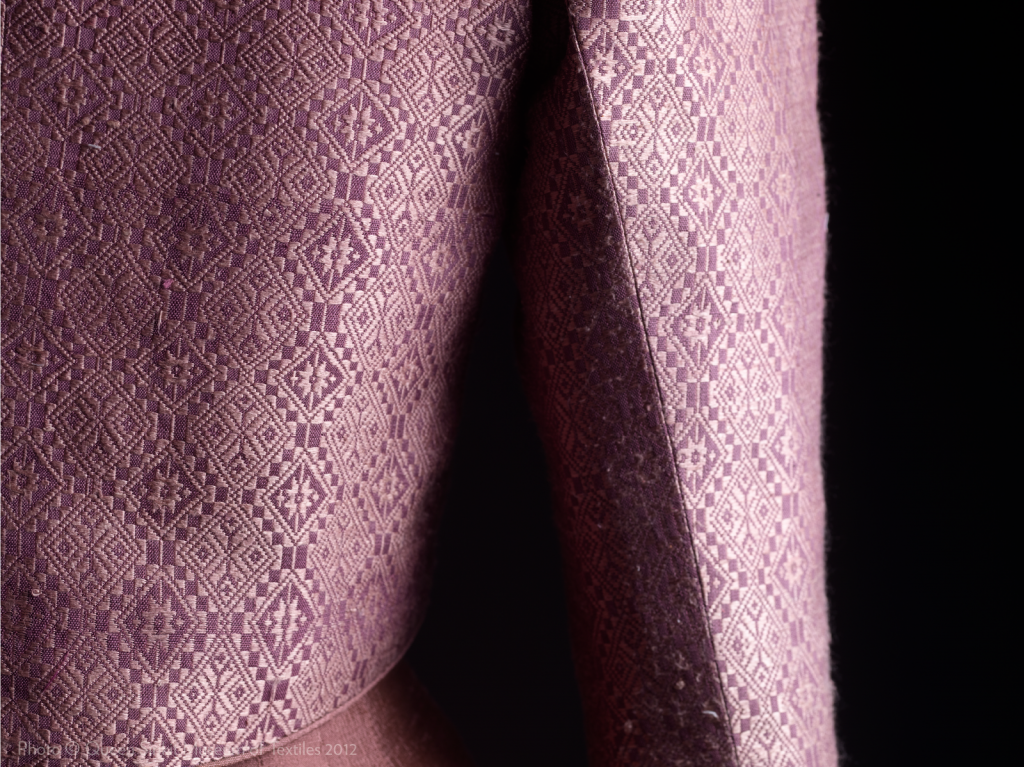
[cr. Queen Sirikit Museum of Textiles]
*This article was created with special help from the Queen Sirikit Museum of Textiles
Reference:
For the Love of Her People Her Majesty Queen Sirikit Creates the SUPPORT Foundation by the Queen Sirikit Museum of Textiles


